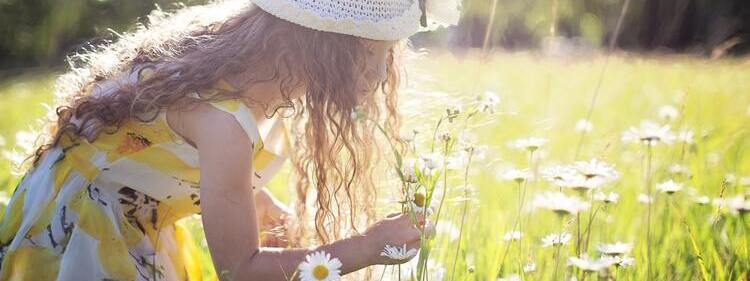
Did you know that no two flowers smell alike? Scientists have identified over 1,700 different aroma compounds in flowers that can combine in a nearly infinite number of ways to produce a unique fragrance in every single scented flower that exists.
So, what’s the purpose of this astonishing diversity of floral scent profiles? Botanists believe that, in addition to attracting pollinators, it protects plants from herbivores and disease-causing organisms.
To humans, however, scented flowers have a magical ability to inspire joy, reduce stress, and increase our sense of well-being. White-scented flowers, in particular, tend to be the most aromatic. The heady whiff of a fragrant bloom can not only kindle the imagination, transporting us to far-off exotic places, but also evoke ‘nose-talgic’ memories of our childhoods.
Okay, before we embark on a ‘de-scent’ into more floral puns, let’s delve into the wonderful world of fragrant flowers and discover the best-scented blooms you can get delivered today.
Gardenia
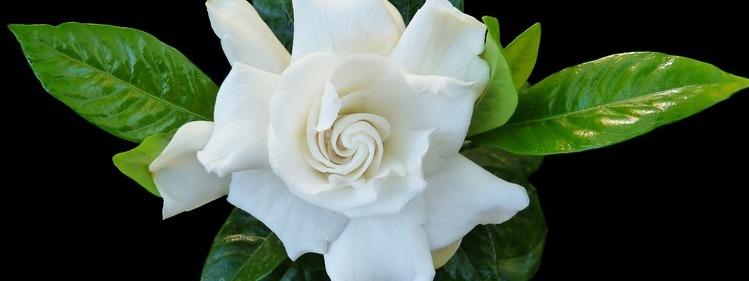
Gardenia has been cultivated for over 1,000 years and is a long-time favourite of plant lovers and florists. Its wonderful fragrance is so recognisable that it’s often used as a reference point by botanists when describing or rating the aroma of other flowers. The gardenia produces a sweet, zesty, spicy perfume with hints of coconut that is both intoxicating and invigorating.
There are hundreds of species of gardenia, but the white-flowering variety that’s known as common gardenia or Cape jasmine is often considered the most fragrant. Taking a while to start flowering, often between 2 to 3 years, the blooms of the common gardenia grow to almost 13cm wide and its flowering period can last all season long in moderate night temperatures. However, it is frost-hardy and can handle temperatures as low as −12°C.
Native to South East Asia, common gardenia grows between 60cm to 2.4 metres tall, depending on the cultivar, and can live for 50 years with proper care and maintenance. They grow well as potted plants and thrive best in moist, well-drained and partial shade. Gardenias also make excellent cut flowers and last for about 8 days in a vase.
Lilac (Syringa Vulgaris)
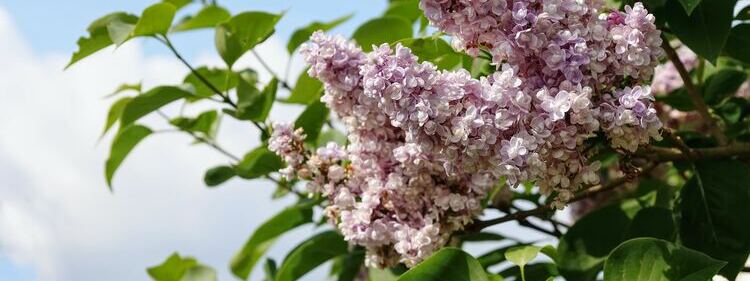
The lively and endearing blooms of the lilac bush are one of the most fragrant flowers you can get for your home or garden. Also known as the common lilac, or old-fashioned lilac, it produces thick clusters of delicate four-petalled flowers that bloom in mid to late spring. The flowers last for about 2-4 weeks and range in colour from purple and pink to cream and white.
Native to Eastern Europe, the heady scent of the common lilac is sweet and fresh, with some likening it to a mix of wild berries and lavender. All colours of the flower produce fragrance; but, due to hybridisation, some modern cultivars have no scent. To avoid disappointment, ask the vendor first whether the lilacs are scented or not before ordering seeds or a bouquet.
In the garden, lilacs grow between 2 to 5 metres high and require very little maintenance. Apart from annual pruning, you can pretty much leave them alone and they will thrive for up to 50 years. They grow best in colder climates and can handle temperatures as low as -40°C. However, the flowers can be sensitive to late spring frost, so it’s best to plant them in a protected area.
Rose
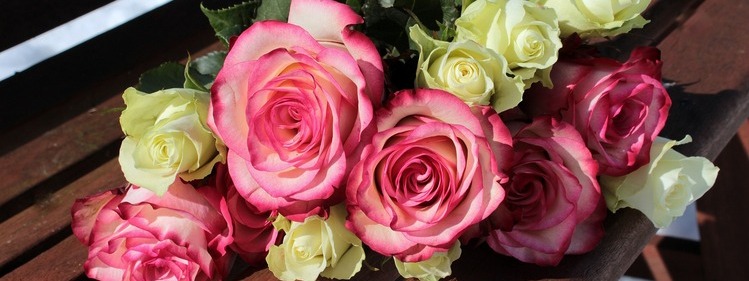
Perhaps the best-known species of fragrant flower is the humble rose. Its popularity is such that to date more than 30,000 cultivars have been developed. However, excluding wild roses, there are basically two main classes of roses: old garden roses and modern garden roses. Old garden roses are essentially those that existed prior to 1867, the year that rose hybridization began. Old garden roses tend to be the most fragrant of the rose species and produce large beautiful blooms. The most well-known types are Rosa Gallica, Rosa Damask, Rosa Alba, Rosa Centifolia, and Rosa Mosses.
Old garden roses, however, flower only once per season. Considered a shortcoming by commercial growers, efforts to create new hybrids began and the modern rose was subsequently born. These new varieties now can flower up to 4 times in one season and many have even larger blooms. But most have lost their fragrance.
David Austin roses, though, are one of the few modern roses that have been specifically bred to maintain their scent and big blooms. In general, rose fragrances are categorised into 5 groups – fruity, tea, myrrh, musk, and old rose – and David Austin roses produce varieties in each scent group. Visit Flowers Across Melbourne to have your very own gorgeously scented David Austin Rose bouquet delivered right to your doorstep. You can choose between the exotic Luxe Rose Garden or the bountiful Garden of Delight bouquet, among many others.
Oriental Lily
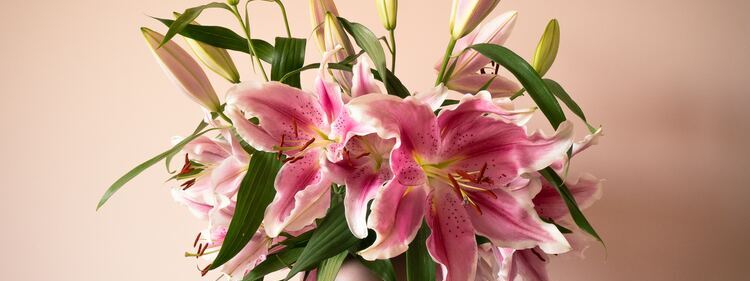
Words can’t sufficiently describe the magnificence of oriental lilies. Their buds burst open during the late summer months to reveal spectacularly vibrant red, pink, yellow, or white blooms that measure as wide as 12 cm in diameter. Oriental lilies are the most fragrant of all lily flowers and have a nocturnal emission pattern, which means they are most fragrant at night.
Unlike other flowers, which produce their scent from petals or corolla, the main source of lilies’ fragrance is the outer parts of the flower, called the tepal. Perhaps this could be the reason why all colours are fragrant. Oriental lily flower stems grow to about 50-90cm, depending on the cultivar, and the plant as a whole can reach up to 2 metres.
Both closed and open versions look exquisite in a vase and emit scent. They can last between 7-14 days in a vase and will last longer if harvested in bud form. Flowers Across Melbourne has an incredible range of oriental lily bouquets, including the Song Of My Heart and Sublime arrangements. You can also go for the Fondest Memories bouquet if you would your flowers to come with a vase.
Heliotrope (Heliotropium Arborescens)
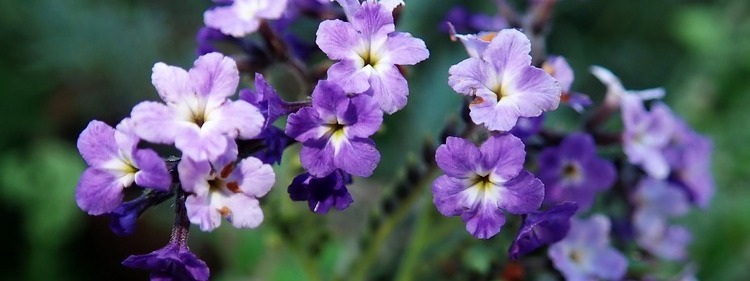
It may look rather harmless, but the heliotrope plant has probably (temporarily) derailed the healthy eating plans of many an innocent bystander. Nicknamed ‘cherry pie’, heliotropes’ wonderful floral scent has been described as reminiscent of freshly baked cherry pie and vanilla.
In cold climates, heliotropes are annuals, but they can grow as perennials in areas where temperatures do not fall below −1.1 °C. They produce clusters of big beautiful white, purple, or violet flowers in the summer and work well as either a bedding or container plant. Native to Peru, Colombia, and Bolivia, heliotropes can grow up to 1.8 metres high and have a vase life of 2 weeks or more.
Although some species of heliotrope, such as Heliotropium europaeum and Heliotropium amplexicaule, have been classified as invasive weeds in parts of Australia, particularly in Western Australia and New South Wales, heliotrope arborescens has not. But households with pets should take particular care when planting this evergreen shrub because they are toxic for dogs and cats.
Tuberose (Agave Amica, formerly Polianthes Tuberosa)
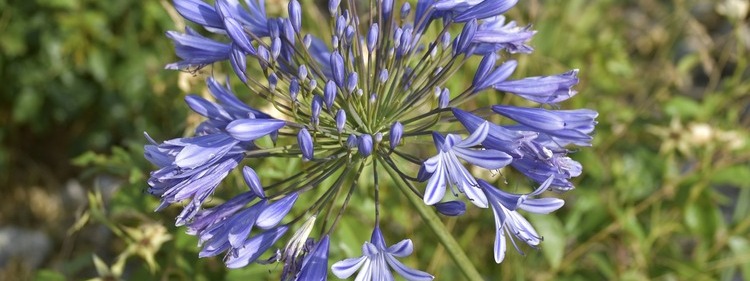
Bearing no relation to the rose flower, the tuberose is actually part of the agave family. One of this family’s more prominent members is the agave tequilana plant, which is responsible for producing the liquor we all know as tequila. Native to Mexico, the sweet fragrance of the tuberose hits you as soon as you near its vicinity. Its flowers are a popular feature in the garlands of many cultures, including India, Bangladesh, and Hawaii.
Naturally producing only creamy-white flowers, the tuberose is fast-growing and typically begins to germinate about 1 to 1.5 months after planting. The best way to propagate it is by planting its bulbs. In colder climates, flowering occurs in the summer months, but in tropical countries, it produces flowers all year round.
Tuberose flower stems grow up to 90 cm long, sometimes even longer, and make excellent cut flowers. They can last as long as 13 days in a vase. Studies have found that the longer the flower stem, the better the vase life. The assumption is that stem length results in greater and more efficient water uptake.
Paperwhite (Narcissus Papyraceus)
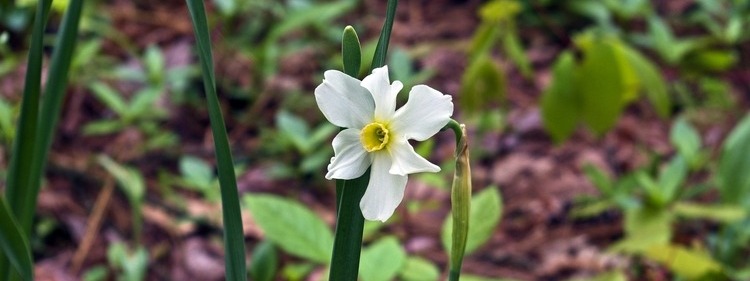
The star-shaped blooms of the paperwhite flower can immediately perk up your mood or living space with its radiance and fragrance. Originating in parts of the Mediterranean, North Africa, and southern Spain and France, paperwhites have an enthralling scent that can permeate throughout an entire house for days. They bloom easily indoors and produce flowers in the late winter and early spring, making them marvellous company during those dark, cold days.
Paperwhites are so easy to grow that they don’t even require soil. All you need is a pot layered with gravel on which you place several paperwhite bulbs with roots facing down. The bulbs grow best when they are planted close together, at around an inch or less apart. Fill the pot with water until just below, but not touching, the roots of the bulbs and position it in a cool area that receives partial shade. And that’s it.
The bulbs often start flowering after a month and can grow up to 35cm. Their vase life ranges between 4 to 5 days. In addition to white blooms, paperwhites have also been bred to produce yellow, orange, and bi-coloured flowers. The fragrance of the yellow flowers is described as ‘lighter and sweeter’.
Viburnum
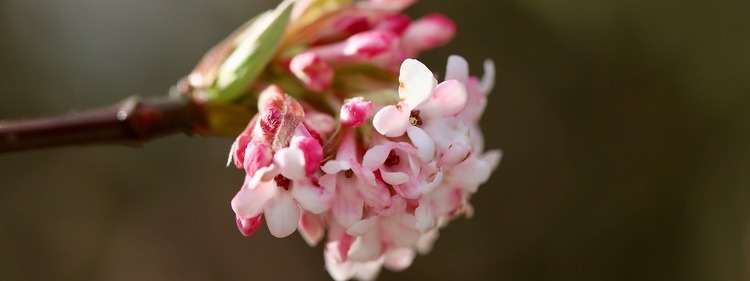
With a name remarkably similar to the well-known fictional metal featured in the Hollywood blockbuster, Black Panther, viburnums may have quite a lot to live up to. And while they may not be able to power entire cities the way vibranium can the city of Wakanda, viburnums have many other wonderful features. They are resistant to most diseases and pests and, depending on the cultivar, can be intoxicatingly fragrant.
Viburnums produce two types of bloom clusters: large and globe-shaped or flat and wide. Flowers are either white or pink in colour. But when it comes to scent, the flowers of Viburnum carlesii, also known as Korean spice or Koreanspice viburnum, are outstanding. Bearing its flowers in mid-spring, Viburnum carlesii is native to Korea and Japan and grows up to 2m.
Viburnum’s dense foliage makes them perfect as garden hedges or screens. They can be deciduous or evergreen, depending on the cultivar. Most of the fragrant varieties, though, appear to be deciduous. They grow relatively quickly, with some species capable of reaching up to 30 feet high if left untrimmed. Their hardiness varies and some can withstand temperatures of -30°C.
Frangipani (Plumeria)
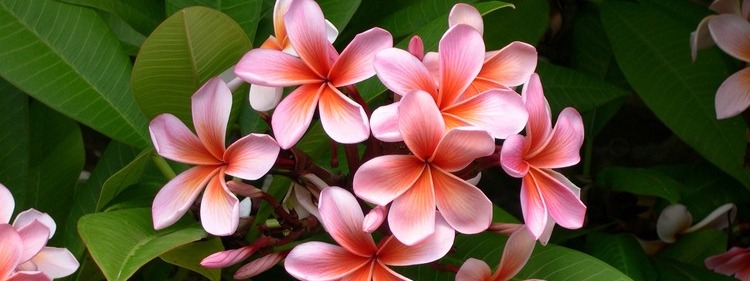
A common and charming part of the olfactory landscape in tropical and subtropical countries, the long-living frangipani can last for decades. Over 1,000 different varieties currently exist around the world, varying in colour from the typical white to different hues of pink and yellow. Some even have a combination of all three colours.
Known for its sweet subtle scent, frangipanis flower more profusely under full sun. In moderate climates, their blooms tend to last throughout the summer, while in warmer areas, such as in parts of Queensland, they can bloom throughout the year. Not all varieties are fragrant, though, and most are deciduous.
The great thing about the frangipanis is that they don’t need much maintenance. They thrive just as well in the ground as in a pot or container. The only thing to avoid is excess water in the soil as they are susceptible to rot in their early stages of growth. Frangipanis are best propagated from cuttings and you can expect them to flower after 1 to 3 years.
Magnolia
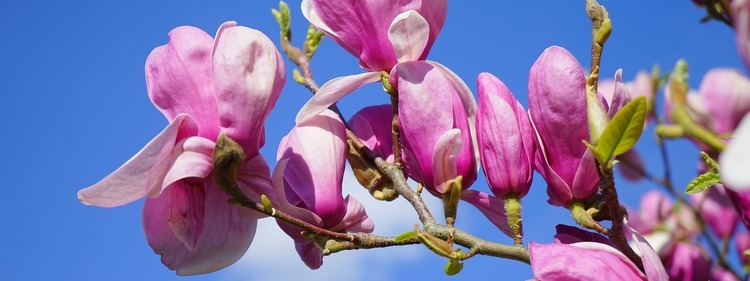
Some botanists believe that the first flower to ever exist on earth bore a close resemblance to the magnolia. In fact, scientists theorise that the reason magnolias depend on beetles for pollination to this day is because they are so ancient that they existed even before bees and butterflies did. While the research continues, what we do know for sure is that magnolias are wonderfully fragrant and diverse.
One of the most popular species is the evergreen magnolia grandiflora, which releases an exhilaratingly fresh and sweet scent. Its big beautiful creamy white flowers bloom in late spring and can grow up to 30 cm in diameter. Given its proclivity for reaching heights of 20 metres or more, though, most gardening enthusiasts opt for the smaller Little Gem Magnolia variety. Bearing all of the charm and attributes of the magnolia grandiflora at a fraction of its height, Little Gem Magnolias also make gorgeous bouquets for friends and loved ones.
Check out Flowers Across Melbourne for a wide selection of Little Gem Magnolia arrangements for delivery today. The Wild Nature bouquet is bursting with tropical greenery and layers of Oriental lilies and snapdragons. And if you’re looking for arrangements that combine lots of native flowers, you can’t go wrong with the Luxury Native, Naturally Native, or the Naturally Aussie bouquets.
Peony (Paeonia)
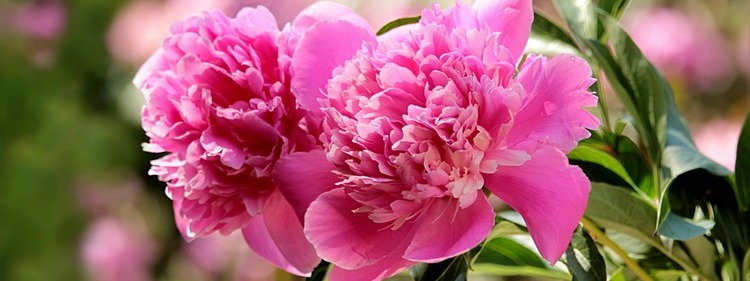
The delicate, scented flowers of the easy-going peony belie its tough and long-living nature. Native to East Asia and southeastern European, including Siberia, peonies are capable of withstanding temperatures as low as -40°C and can live for at least 100 years.
Cultivated in China since the 7th century as a pure white ornamental flower, peonies today are available in a wide range of colours. They can produce single or double flowers, some measuring up to 25 cm in diameter. Unfortunately, many single hybrids and most red-coloured varieties are not fragrant. But the white and pink cultivars still produce a lovely scent, as do the double blooms.
Peonies don’t need much maintenance at all. In fact, a running joke in the botanical world is that peonies “thrive on neglect”. Of course, that’s a bit of an exaggeration. But, so long as they get full sun, well-drained soil, and occasional pruning then peonies are happy chappies. They take about 3-4 years to mature and start flowering, which commonly takes place in late spring. Both seed and root division propagation work well.
Brown Boronia (Boronia Megastigma)
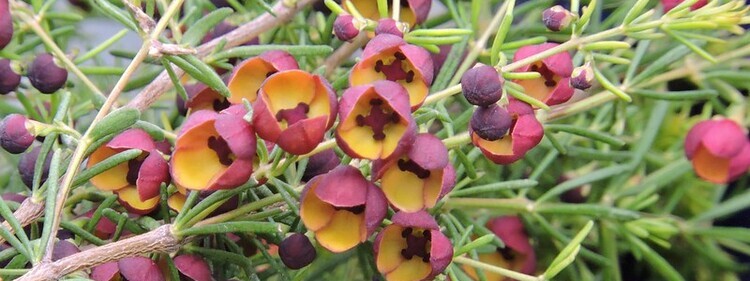
One of Australia’s greatest contributions to the world of perfumery and fragrant floriculture is the humble Boronia megastigma. A dull brown colour, the brown boronia, as it’s commonly known, grows between 0.5 to 1 metre high and produces tiny flowers that measure no more than 1cm wide. However, its scent is delightful.
The brown boronia’s growing popularity over the years is such that most of its cultivation has shifted from its native location of southwestern Western Australia to other parts of Australia, including Victoria. A member of the citrus family, brown boronia has a short flowering season that usually begins in late winter or early spring and lasts about a month.
Brown boronia is considered tricky to maintain and is sensitive to warm summer winds and dry spells, even short ones. The best way to grow this evergreen shrub is from cuttings and they perform best in cool, moist, well-drained soil and partial shade. If their dark brown exterior isn’t much to your liking, yellow, red, or bi-coloured striped cultivars are now also available and are equally as fragrant.
Sweet Pea (Lathyrus Odoratus)
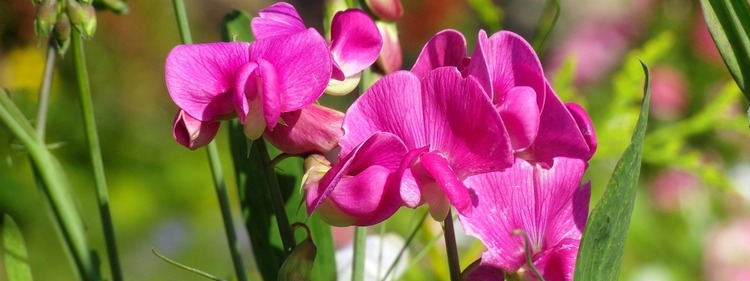
In Greek, the scientific name of the sweet pea translates to ‘fragrant pea’. This elegant flower is so appreciated for its aroma that a study found it was the number one reason customers purchased them, far outranking shape or colour. This is particularly significant given the beautiful hues and unique structure of sweet pea flowers.
Its petals – shaped somewhat like dainty butterflies – come in various shades of pinks, purples, reds, and creamy white. Some varieties even produce multiple colours at the same time. As a climbing plant, sweet peas need a support structure, such as a lattice or trellis or even a garden wall, to help them grow upwards. In these instances, they can reach heights of almost 2.5 metres. Without support, though, they grow in a bushy form to 70-90cm tall.
Sweet peas are annuals, so they die at the end of each flowering season and have to be replanted every year. The great thing about annuals is that they grow very fast and are generous bloomers. So you get to enjoy the fruits of your labour quite quickly. Perennial varieties do exist though, such as the Lathyrus latifolius. However, the trade-off is that these species are not as fragrant as the Lathyrus odoratus.
Freesia
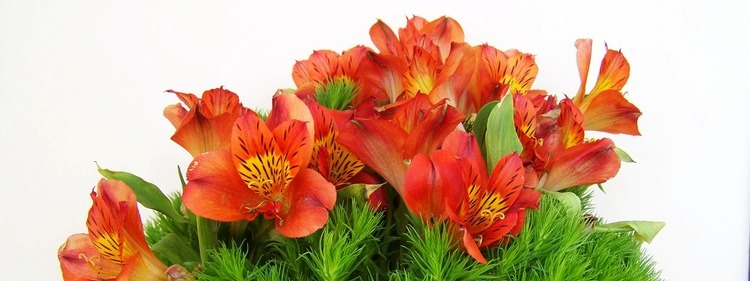
The one thing you will never lack with freesias is colour options. Available in an astonishing array of whites, reds, yellows, oranges, pinks, and purples, freesias are adored by florists and flower lovers alike for their versatility. Their fresh, sweet fragrance has been likened to fruits, baby powder, and even the scent of spring. The white and yellow varieties are believed to be the most fragrant.
Native to East and Southern Africa, freesias bloom profusely during the summer. They tend to produce flowers within the first year of planting, sometimes as early as after 3 to 4 months. Freesias are capable of reaching 60 cm high with each stem bearing between 6 to 12 flowers. They also have an impressive vase life and can last up to 12 days in water as a cut flower.
Freesias do not like cold winters. They can tolerate temperatures only as low as about -7°C and frost is a no-go. However, they grow well indoors. To thrive, they need moist, well-draining soil, sufficient light, and temperatures of about 15°C. You can also opt to buy them as beautifully arranged, boxed flowers from Flowers Across Melbourne and have them delivered on the same day.
Wisteria
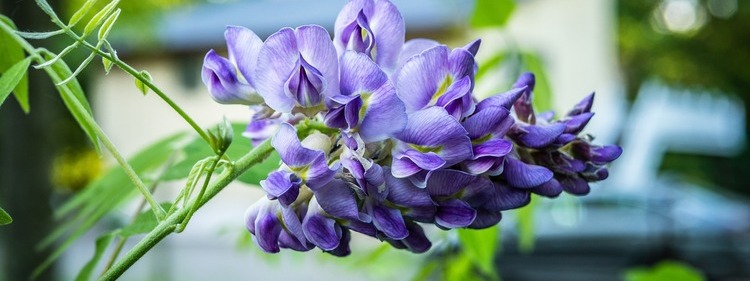
A curious fact about wisteria is that the Japanese species, called Wisteria floribunda, grows by wrapping itself clockwise around objects while the Chinese wisteria, known as Wisteria sinensis, wraps itself anti-clockwise. Why does this happen? Scientists aren’t really sure. But it has been happening for a very long time because wisterias live for hundreds of years.
All wisterias are fragrant to varying degrees and scents tend to be either sweet-smelling or musky. Typically blooming during spring and summer months, wisterias occur in a wide range of colours, including pink, purple, lilac, and white. They are fast growing and can reach 20 metres high and 10 metres wide. But they can also be trained to grow in a container if this sounds too intimidating.
Planting wisteria in a container may actually be the best way to go because not only is it toxic to cats and dogs, but it can also quickly take over an area by strangling or crowding out surrounding plants. Cuttings are the fastest way to grow wisteria, although they usually still take between 3 to 7 years to mature. But seeds take even longer to bloom.
Snapdragon (Antirrhinum Majus)
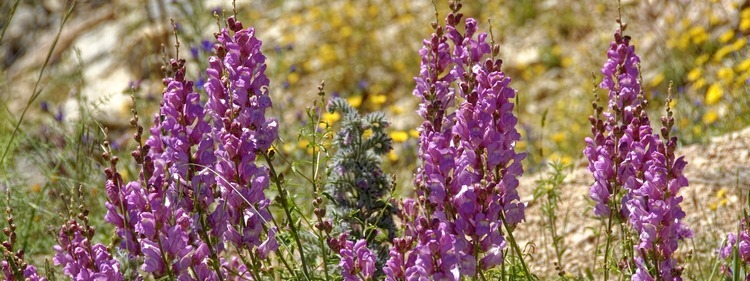
The brightly coloured blooms of the snapdragon add lots of fun interest to gardens and homes. Their scented flowers attract hummingbirds and butterflies in the spring and summer months, and sometimes during autumn depending on the cultivar. The most fragrant cultivars are the Aroma series and the La Bella variety. But many popular hybrids, such as the tall Rocket series, the double-blooming Madam Butterfly variety, and the dwarf Little Darlings do not have any scent.
Snapdragons are typically grown as annuals, but there are actually short-lived perennials. Short-lived typically means that they last an average of 3 years before naturally dying off. They can withstand temperatures of −17°C without much difficulty, but anything lower than that requires overwintering. Although they enjoy the sun, they do best in partial shade and temperatures between 18°C to 24°C.
Ideal as cut flowers, snapdragons add volume and texture to bouquets. They can last for up to 2 weeks in a vase. Browse Flowers Across Melbourne’s lovely selection of snapdragon arrangements, including the exquisite Rosy Dreams, the Angel Kisses bouquet, and the wintery Arctic Belle, among many others.
Jasmine
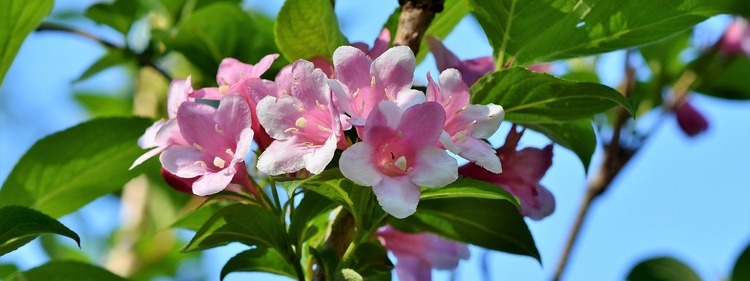
Over the course of its grand and illustrious history, the jasmine has garnered a series of affectionate royal epithets, including the Queen of Fragrance and the King of Flowers. The latter title though, to be fair, has many challengers, including peonies, roses, dahlias, and even the lotus flower.
This effusive love for the jasmine largely stems from its unforgettable, intoxicating fragrance. Its broad range of species and cultivars produce scents that range from sweet, fruity, and vanilla, to even lemon-scented. The aroma of jasmines becomes stronger at night when their flowers open and in some tropical countries they are intentionally planted near windows so that their perfume spreads throughout the house.
In most tropical areas, jasmines are white flowering, with some yellow species native to China, Japan, Italy, and parts of the Mediterranean. White jasmines are the most fragrant. The common jasmine, also known as Jasminum officinale, grows the tallest. It’s a hardy species that can withstand temperatures of up to −15 °C.
Leopard Orchid (Ansellia Africana)
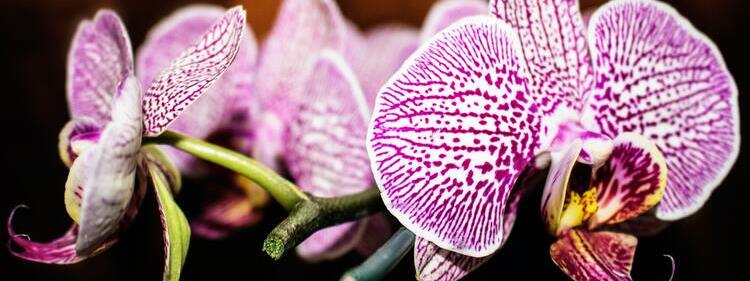
This captivating bloom is found only in tropical and subtropical areas of Africa. Given its wide variation in size, colour, and flower patterns, the Leopard orchid was accorded its own botanical classification called Ansellia. Known scientifically as Ansellia Africana, the Leopard orchid is one of only about 400 plants in the world that belong to a monotypic genus – that is, a plant group with only one species in it.
Leopard orchid varieties can differ quite dramatically from each other. Some have no spots at all, and are therefore yellow-green in colour, while others are almost completely covered in large brown patches. The majority, though, are a darkish-yellow colour with flecks of dark brown spots. They also vary in fragrance. Most are woody or musky, and a few emit a spicy scent.
Research has found that Leopard orchids possess biomolecules that can potentially treat Alzheimer’s disease; however, this precious plant is currently at risk of global extinction. They have long bloom periods, lasting up to 10 weeks and in the wild, they often occur in drought-prone areas, surviving long periods without water. This is because when they aren’t receiving enough nutrients, the roots of Leopard orchids can change course and grow upwards to form pockets that catch fallen leaves that they turn into food.
Honeysuckle (Lonicera)
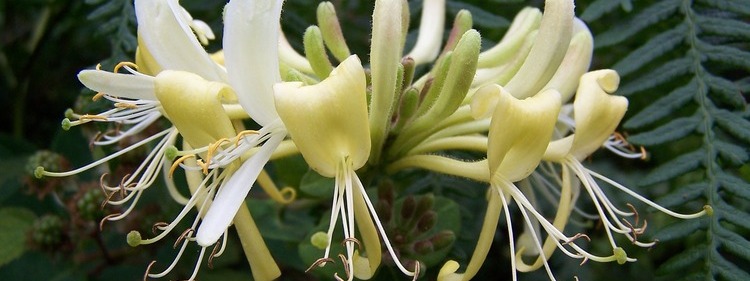
Named after the tendency of hummingbirds to drink the sweet nectar from inside its tubular blooms, the honeysuckle plant is a magnet for all kinds of pollinators. Apart from hummingbirds, the plant also plays host to a variety of butterflies, bees, and moths due to its enticing scent. The most aromatic variety though is the common honeysuckle, which is scientifically known as Lonicera periclymenum.
Ranking next on the fragrant scale is the Lonicera fragrantissima species, which is native to China. They release a fresh scent that’s similar to lemons. Once established, honeysuckles are generally easy to maintain, requiring only occasional watering during hot summers. They flower during spring, summer, and autumn months, depending on the species.
Honeysuckles live for approximately 20 years and come in a variety of colours, including white, yellow, orange, pink, and red. They grow to 7 metres high, sometimes more and are relatively winter hardy. Some species can handle temperatures of up to −34 °C while others −28.9 °C.
Garden Phlox (Phlox Paniculata)
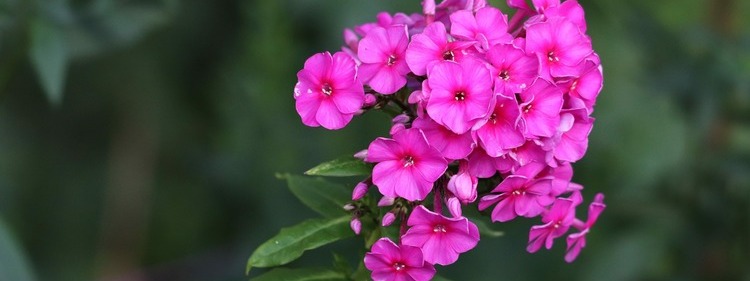
Once you’ve seen the garden phlox in bloom, you quickly understand why 32 of its cultivars have received the Royal Horticultural Society’s Award of Garden Merit. Their showy, fragrant flowers are delightfully eye-catching. They originally occur in clusters of baby pink with a dark pink centre or lavender with a white centre. Modern varieties are now available in purple, orange, red, bicoloured, and occasionally white flowers.
Garden phlox emit a sweet, spicy scent that’s a subtle mix between vanilla and clove. They take about 2 years to reach maturity and flower during the summer, with some varieties often spending up to 6 weeks or more in bloom. Native to the United States, garden phlox can grow in a wide variety of climatic conditions, even in temperatures as low as −34°C.
Although they are perennials in warmer coastal areas, garden phlox are typically grown as annuals in colder regions. They perform well in full sun and partial shade, and some varieties grow up to 1.2 metres. Lasting about a week in a vase, they make great cut flowers and offer the desirable trifecta of being: low maintenance, disease-resistant, and pest-free.
Sweet Alyssum (Lobularia Maritima)
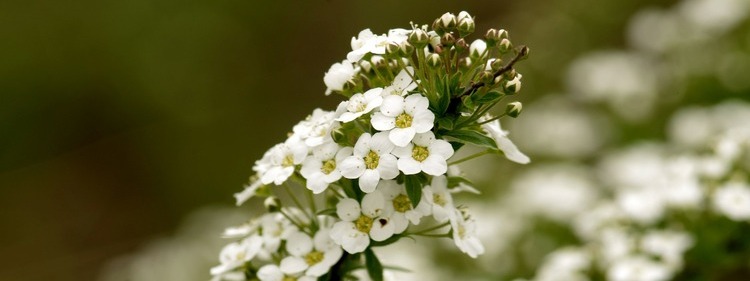
Known for its exceptionally generous flowering, the Lobularia maritima was given the name sweet alyssum because of its honey-scented flowers. Each stem bears a dense cluster of tiny, four-petaled flowers that range in colour from white to purple, pink, yellow, orange, and red. The white variety is the most fragrant.
As with many plants that bloom profusely, the sweet asylum is an annual, spending all of its energy to gift us with a wonderful display of flowers for just a single season. Annuals have the advantage of blooming for longer, often throughout summer and into autumn. And you can also easily extend their bloom period by pruning off the spent flowers.
Consequently, this makes sweet alyssums a great and steady source of cut flowers during the flowering season. They also have an impressive vase life of between 7 to 10 days. Since they are native to southern Europe, sweet alyssums do not tolerate frost well. They prefer mild temperatures that don’t dip below -7°C and are ideal as bedding displays, window box flowers, and border edging.
Silver Wattle (Acacia Dealbata)
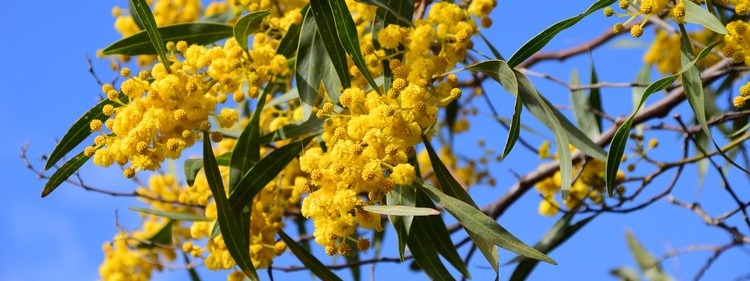
A silver wattle in bloom is a breathtaking sight. The flowering, which takes place in late winter and lasts until spring, is so profuse that every inch of the tree is covered with thousands of bright yellow flowers. Even when it’s not flowering, the foliage of this evergreen tree remains vibrant and attractive throughout the year.
Silver wattle is known as Giigandul by the Wiradjuri people and is endemic to Victoria, New South Wales, Tasmania, and the Australia Capital Territory. Interestingly, when harvested as cut flowers, they are subsequently referred to as mimosas instead of silver wattle. Deeply fragrant, they can last up to 10 days in a vase.
In temperate climates, silver wattles can grow to about 30 metres tall. This, however, might make it unsuitable for growing in a garden. A more manageable option for the garden though might be the dwarf cultivar, Acacia nanodealbata. Reaching only 6 metres high, it’s just as fragrant and generously flowering.
Primrose (Primula)
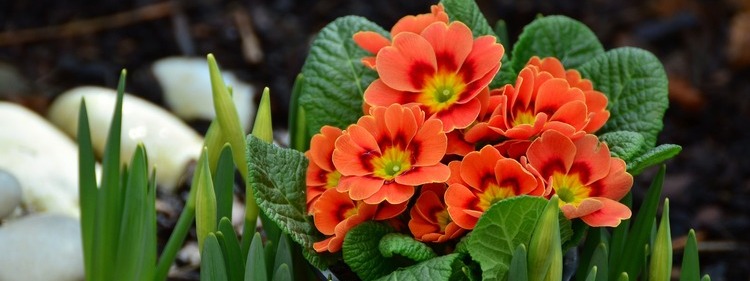
Capable of flowering continuously for up to 6 months, sometimes even longer, primroses are renowned for ushering in spring. They bloom so early in the season that their scientific name comes from the Latin word “primus”, which means first.
Primrose flowers are quite adorable and produce a fresh, delicate fragrance. They occur naturally in yellow or white with a dark yellow centre while cultivars produce colours that range from purple and pink, to red, burgundy, and orange. And, amazingly, they all have a dark yellow centre, which is striking against each beautiful shade. Primroses grow to about 30 cm tall in 2 to 5 years and thrive in both garden beds and containers. However, keep them away from pets as they can be toxic to them.
Originally found in Europe, northern Africa, and parts of Asia, some primrose species produce a single flower on each stem while others bear lovely flower clusters per stem. The common primrose, formerly known scientifically as Primula acaulis and now as Primula vulgaris, is quite hardy and can grow in temperatures as low as −34.4°C. With proper care, primroses can last up to 10 days in a vase.
Stock (Matthiola Incana)
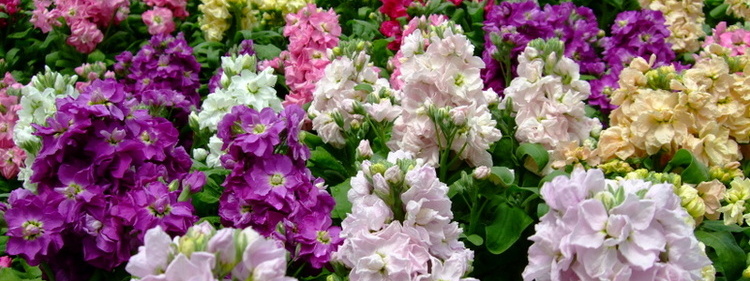
The unfortunately unimaginative common name of the Matthiola incana really doesn’t do its loveliness any justice. Fully known as Hoary stock, which isn’t any better, this attention-grabbing plant blooms energetically throughout the season. It produces wonderfully fragrant single or double flowers of different sizes and colours.
Stocks are available in white, pink, purple, salmon, lavender, yellow, red, and many other hues. However, there are just two main types of stock: spray and columnar. The column varieties produce a single stem that bears a cluster of flowers, while the spray types have multiple stems with loose flowers growing near the top. All types though are moderately drought-tolerant and easy to care for.
As annuals, stock flowers bloom profusely within the first year of planting. They usually germinate within 1-2 weeks when grown indoors at temperatures between 18°C and 24°C. Stocks have a long vase life and are prized by florists for their ability to add volume, colour, fragrance, and texture to flower arrangements.
Hyacinth (Hyacinthus)
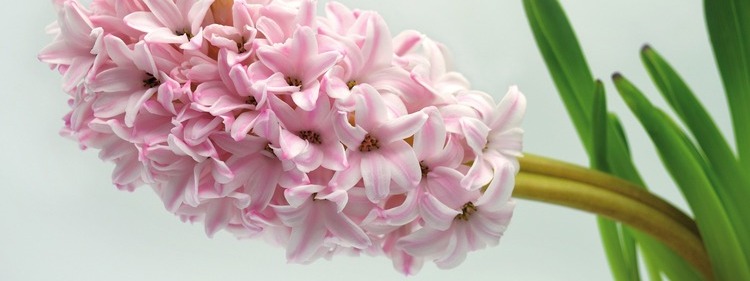
Although native to parts of the Mediterranean, Turkey, Palestine, and Asia, the hyacinth is more commonly known as the Dutch hyacinth. This is due to its long history in the Netherlands where it has been heavily cultivated since the 1700s. To date, Holland remains the world’s largest producer of hyacinths.
The Hyacinthus plant group contains only 3 species and the Hyacinthus orientalis is the most common and popular one. It is particularly renowned for its incredibly rich fragrance, which increases in strength during its bloom period from mid-spring to summer. Relatively drought-resistant and hardy, hyacinths grow in a wide range of climates and can handle soil temperatures as low as -5°C. They prefer full sun and partial shade and can grow up to 25cm tall.
Hyacinths are mildly toxic and should be kept away from pets. It’s also advisable to use gloves when handling the bulbs during planting. They are available in almost every colour imaginable, including white, pink, blue, yellow, salmon, red, purple, and every hue in between.
Jonquil (Narcissus Jonquilla)
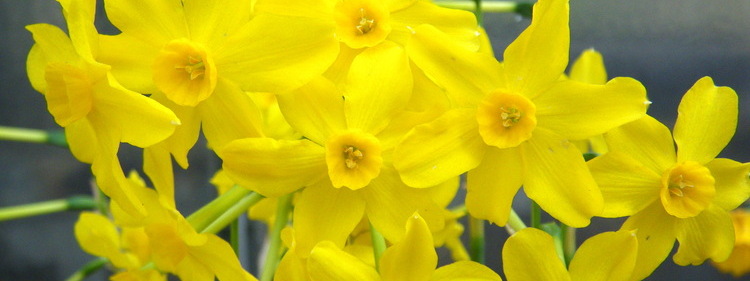
As members of the Narcissus group of plants, jonquils are a species of daffodils. And like most daffodils, jonquils have a sunny disposition, both literally and figuratively. Their big, bright yellow blooms are vibrant and full of life and they’re designed to grow toward the sun.
Jonquils are deeply scented and are, in fact, thought to be the most fragrant of all narcissus species. They bloom in late spring and stems bear an average of 3 flowers each. This is quite unusual for a daffodil, which commonly produces only one flower per stem. With stems often reaching 45 cm in height, jonquils make stunning cut flowers and can last for about 7 days in a vase.
Although sensitive to frost, jonquils are quite hardy and can grow in climates with temperatures as low as −34.4 °C. Native to Spain and Portugal, they are relatively low maintenance and are resistant to disease, pests, and drought. Keep them away from pets though because they can cause them complications.
Chocolate Lily (Dichopogon Strictus)
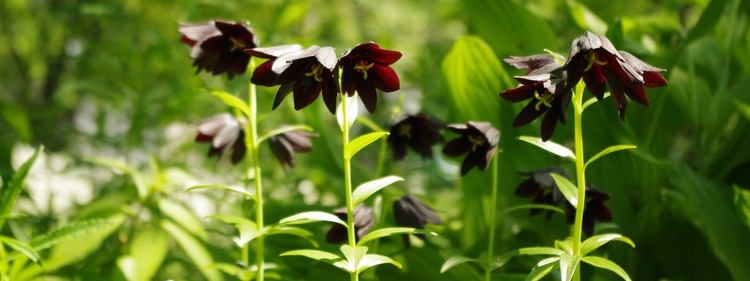
Guaranteed to be a favourite among chocolate lovers, this Australian native produces a smattering of simple mauve flowers that, yes, smell like chocolate. With other varieties described as emitting caramel and vanilla scents, the Dichopogon strictus is clearly a sweet lover’s delight!
Formerly known as Arthropodium strictum, chocolate lilies happily have a long flowering period that starts in late winter and continues all the way to summer. Once their flowering period is over, they die all the way down to the rootstock. This may startle some plant lovers, but rest assured that it’s completely normal. They re-shoot again once autumn rolls back around.
Chocolate lilies grow to about 1.2 metres tall. They are low maintenance and are tolerant of a wide range of temperatures. They make lovely bedding plants and also take to containers well. With stems reaching about 10 cm in height, they also work well as cut flowers.
Petunia
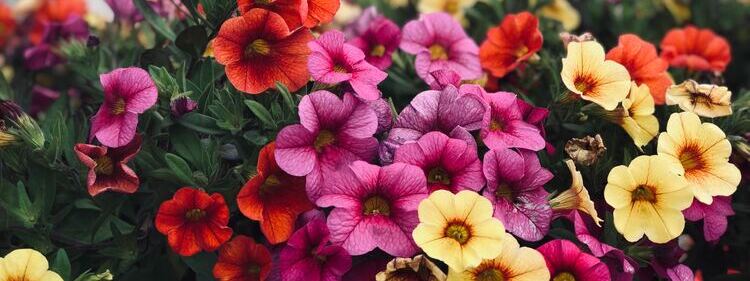
The sheer number of colours in which petunias are available is simply staggering. There are hundreds, if not thousands, of cultivars and all are the results of the hybridisation of the Petunia axillaris and the Petunia integrifolia. The axillaris produces large, white flowers that release an incredible scent at dusk and grow more fragrant as the night progresses, while the integrifolia species is virtually scentless and bears purple flowers.
Petunias are frost tender and grow as annuals in cooler areas and as perennials in warmer climates. The hybridisation process of petunias has resulted in five main types of flowers – grandiflora, multiflora, floribunda, milliflora, and ground cover – that vary in flower size, plant height, bloom quantity, and other qualities. The flowers of the grandiflora in particular can be quite remarkable to behold. It produces both single and double blooms, with a single grandiflora petunia flower measuring up to 12 cm wide.
Multiflora petunias bear more flowers than the grandiflora, but are smaller in size. They also produce single and double blooms and are more tolerant of rain. The floribunda cultivar was created to combine the size of the grandifloras with the weather resilience of multifloras, while millifloras are miniature versions that bear flowers that are about 2-3cm wide. Conversely, the ground cover varieties are spreading plants that can reach up to 1.5 metres along the ground.
Luculia
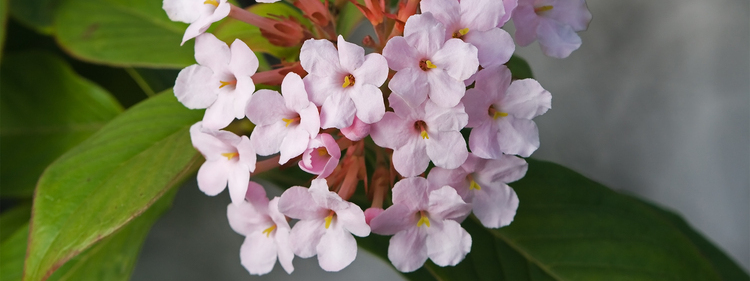
A rare perennial plant found at altitudes of 1,500 metres and higher, luculia is native across the Himalayas, Nepal, and southern parts of Asia. Its name comes from the Nepalese word for the plant, which is luculi-swa. There are only five species of Luculia, ranging from evergreen shrubs to small deciduous trees, and all are highly fragrant.
The Luculia gratissima is a favourite among gardening enthusiasts because it blooms right in the middle of winter. This makes fantastic additions to gardens during those cold, grey days. Its baby pink flowers bloom in thick, bountiful clusters and the plant can grow up to 3 metres tall in cultivation over a period of 10 to 20 years.
There are several Luculia gratissima cultivars, which offer diversity in terms of fragrance, colour, and size. Varieties tend to be evergreen or semi-evergreen and are quite sensitive to frost. Therefore, they need to be protected during the winter or planted in sheltered locations in areas that are prone to frost. They also grow well in containers and can, alternatively, be moved indoors.
Sweet Violet (Viola Odorata)
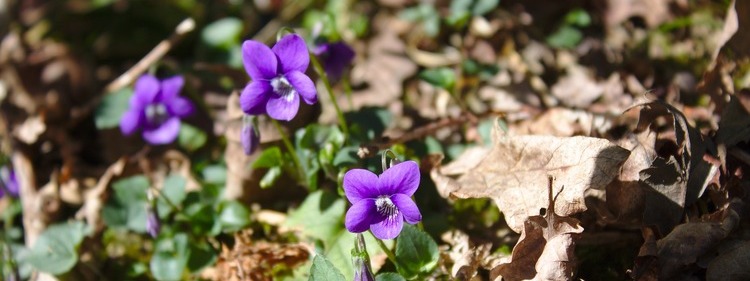
Containing between 500 to 600 different species, the viola group of plants is the largest in the Violaceae family and the viola odorata is the only fragrant species among them. Found naturally across parts of Europe, Asia, and North Africa, sweet violets have historically been used as garnishes, in desserts, and as ingredients in perfumes.
They don’t grow very high, typically reaching between 15cm and 25 cm tall, and, depending on the cultivar, can flower in late winter or early spring. Some varieties also bloom multiple times per season. Sweet violet flowers are naturally either violet-blue or white, but you can also find yellow, pink, peach, and purple varieties, among many other colours.
These hardy perennials work well as either a bedding or container plant. Additionally, due to their low-growing nature, they also make excellent ground cover. They can grow from either seed or cuttings and prefer full sun and partial shade.
Caramel Grevillea (Grevillea Polybotrya)
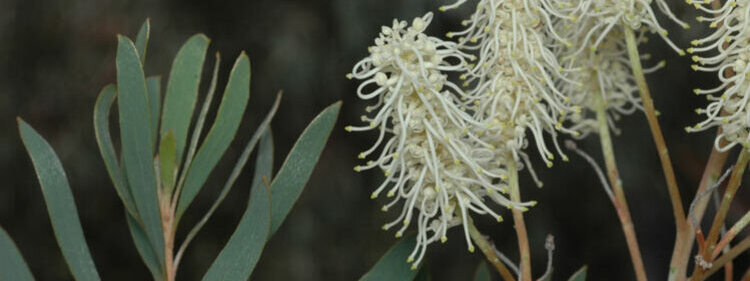
Who would have thought that a flower could smell like caramel? Well, that’s the exact scintillating aroma that the caramel grevillea emits throughout the spring and into summer. A perennial evergreen shrub, caramel grevillea flowers over a period of about 3 months and produces creamy-white upright blooms that start off light pink in colour.
Caramel grevillea is endemic to Western Australia and typically reaches up to 4 metres tall. Preferring sandy soil, it grows well in full sun and is capable of tolerating temperatures as low as -6°C. The most effective way to propagate caramel grevillea is from cuttings.
Domino Cactus (Echinopsis Subdenudata)
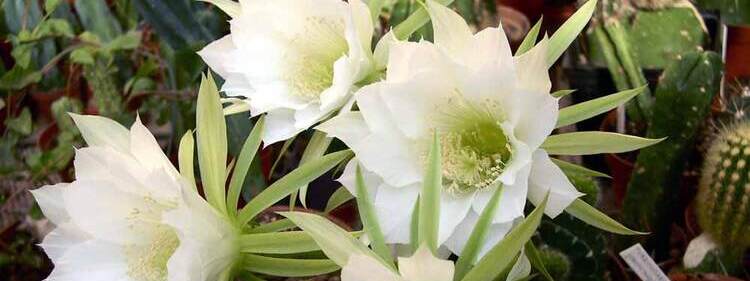
As a species that grows in remote mountainous regions at altitudes of up to 1,800 metres, the Domino cactus naturally comes with a few quirks. Known interchangeably as Echinopsis subdenudata and Echinopsis ancistrophora, it blooms only at night and only for 24 hours. Not to worry though, it flowers several times more within a season, starting from late spring through to the summer.
Globular in shape, the domino cactus gets its name from the tiny white dots on its body like those on domino pieces. Most, if not all, varieties have between 8 to 12 ribs and typically grow to about 8cm high and 12cm wide. Domino cacti are particularly prized for their large, amazingly fragrant flowers that are often either white or light pink in colour.
The needles on domino cacti are almost nonexistent, which makes them easy to handle. They grow well indoors and in the garden and can withstand temperatures as low as -7°C. As houseplants, they do well with lots of light and an average temperature of 21°C is optimal for flowering. In the garden, they prefer partial shade in the summer and full sun during winter.
Mock Orange (Philadelphus)
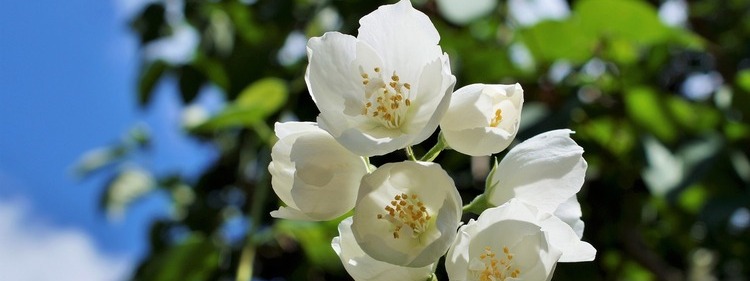
The contrast of the mock orange’s bright yellow pistils against the pure white of its petals is one of nature’s finest works of art. Magnificent in their simplicity and elegance, mock orange flowers bloom abundantly in early spring or summer, depending on the cultivar. Several varieties of mock orange shrubs have been awarded the Royal Horticultural Society’s Garden Merit.
A deciduous perennial, the mock orange gets its name from its flowers’ similarity to those of the orange fruit. Its flowers can be either single or double blooms and they produce a sweet, gorgeous scent that can fill an entire room. Some of the more fragrant standouts are the ‘Belle Etoile’ variety and the ‘Lemoinei’ hybrid, which are particularly renowned for their scent and bloom size.
Mock oranges can live for 50 years or more and grow up to 3 metres tall. They are relatively low maintenance and can tolerate temperatures as low as -34.4°C. They grow well in well-draining soil and prefer full sun to partial shade.
Angel’s Trumpet (Brugmansia)
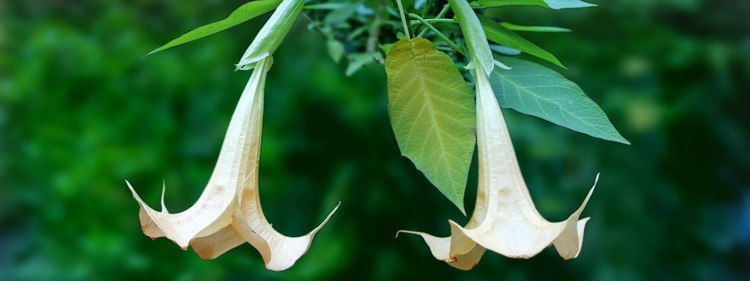
During the summer, the Brugmansia produces a beautiful melody of blooms that dangle upside down in a lovely public display. Its flowers come in a variety of colours, including pink, red, and white, but it was probably the golden-yellow cultivar that inspired botanists to liken them to angels’ trumpets.
There are numerous cultivars and species of Angel’s trumpets with scents that have been described as ranging from musky and citrusy to resembling mint, jasmine, gardenia, and other fragrant flowers. While most species of this evergreen perennial flower throughout the year, some produce blooms every 2 months. Flowers tend to range between 10cm to 30cm in diameter.
Angel’s trumpets are frost sensitive, but can handle temperatures as low as −15°C. In tropical and subtropical regions, some Angel’s trumpets can grow as tall as 10 metres, but they are more manageable when grown in containers where they reach 4.5 metres at most. Much has been made about Angel’s trumpet’s toxicity, but they are only poisonous to humans and animals if ingested. So make sure that you and your loved ones and pets do not do so.
Coral Plant (Neohenricia Sibbettii)
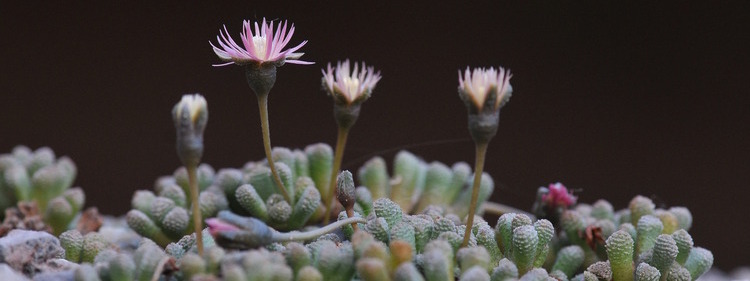
For lovers of compact, low-maintenance plants, you can’t get any smaller or more resilient than the coral plant. A night-blooming succulent that typically grows between 1 cm to 10 cm in height, and 30 cm wide, the coral plant can handle long periods without water and prefers loamy or sandy soil. Due to its qualities, it has gained the Royal Horticultural Society’s Award of Garden Merit.
Fascinatingly, the coral plant grows by splitting its leaves in two. The split halves become two new leaves and the process repeats over and over as the plant spreads outward. The growth method has been likened to that of creeping plants and coral plants can take between 5 to 10 years to mature.
Endemic to South Africa, coral plants are night-blooming and produce a single wonderfully fragrant flower in the summer. The scent is described as a musky tropical mix of pineapple and coconut. Measuring about 15-17mm wide, the flowers are white with pinkish-purple tips. Coral plants can tolerate temperatures as low as -15°C and make excellent potted plants.
Sweet Olive (Osmanthus Fragrans)
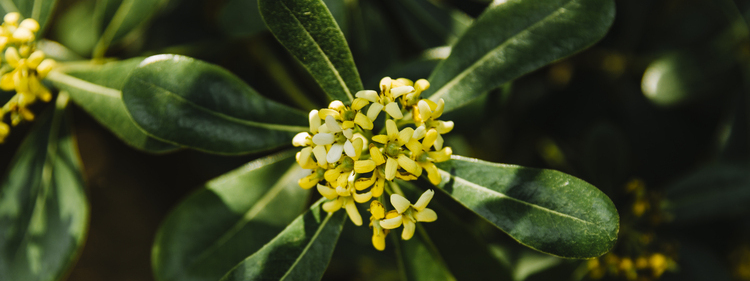
You may have to get pretty close to the sweet olive to spot its tiny creamy white flowers, but you can definitely smell its wonderful scent from far away. In fact, its aroma is so powerful that both of its scientific names refer to how fragrant it is. In Greek, ‘osme’ means fragrant and ‘anthos’ flower, and we can probably figure out what ‘fragrans’ means.
Measuring only 1cm long, sweet olive flowers also come in shades of yellow depending on the species, and bloom in the spring and autumn months. However, the evergreen shrub can grow up to almost 8 metres in the wild. But, in cultivation, they generally reach about 4 metres tall.
Sweet olives are also known as fragrant tea olives and take about 10 to 20 years to reach full maturity. They are native to several countries in Asia, including China, Taiwan, and Japan and can handle temperatures as low as −12.2°C. They are drought-tolerant and work great as hedges or fences.
Closing
Fragrant flowers are an amazing part of nature. They not only help flowers pollinate and protect themselves, but they also improve our moods and mental health. The main challenge of scented blooms is that they can trigger allergies in some people and are toxic to pets.
Apart from that, there are few things better than a garden or home filled with the fragrance of flowers. Designed to produce scents at specific times of the day, some blooms release their perfume in the morning, others in the evening, and some let their fragrant flags fly throughout the day. Therefore, if you plan things just so, you can enjoy an aromatic environment all year round.
For a wide selection of fresh, scented bouquets of flowers that have been hand-made to order, check out Flowers Across Melbourne. They guarantee same-day delivery and have a team of expert florists ready to help and advise you.

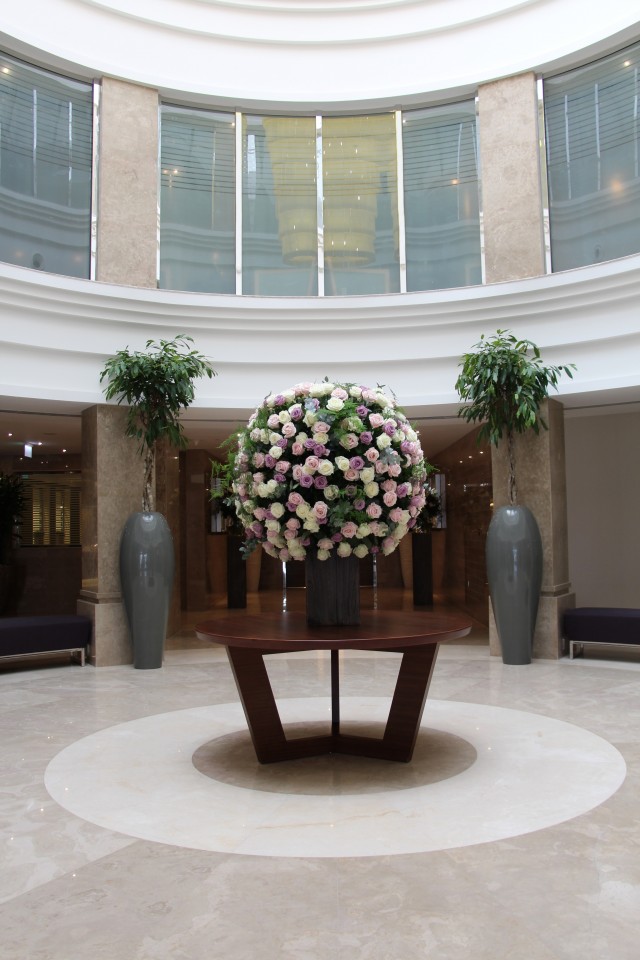
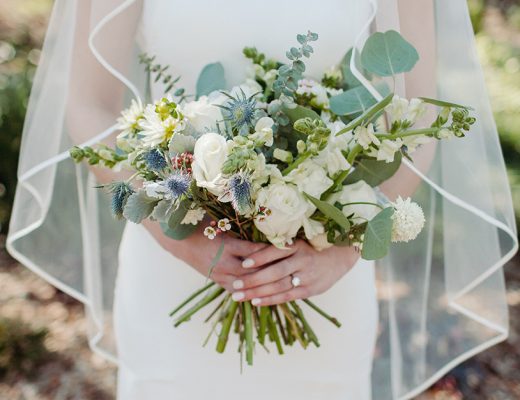
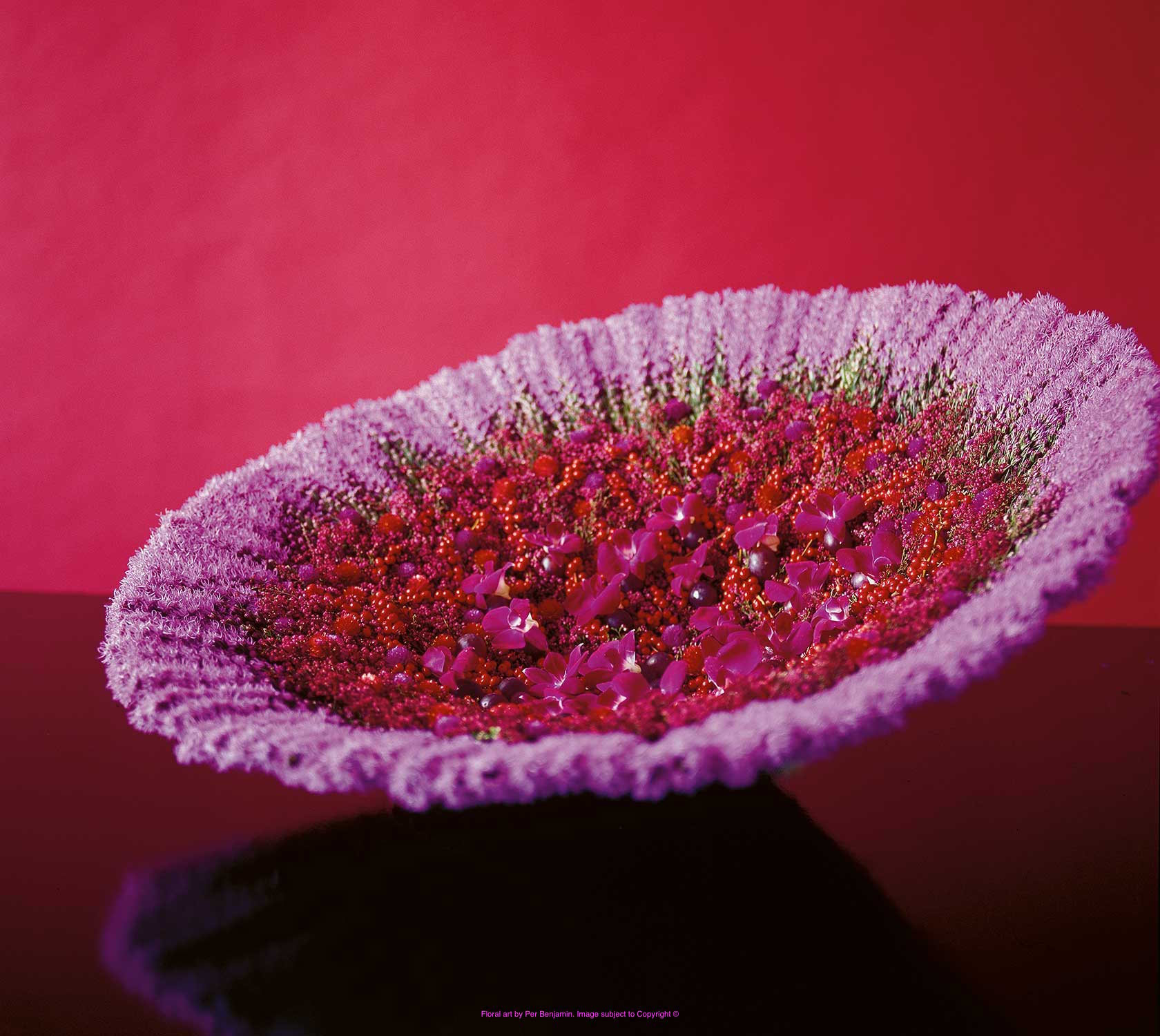
No Comments